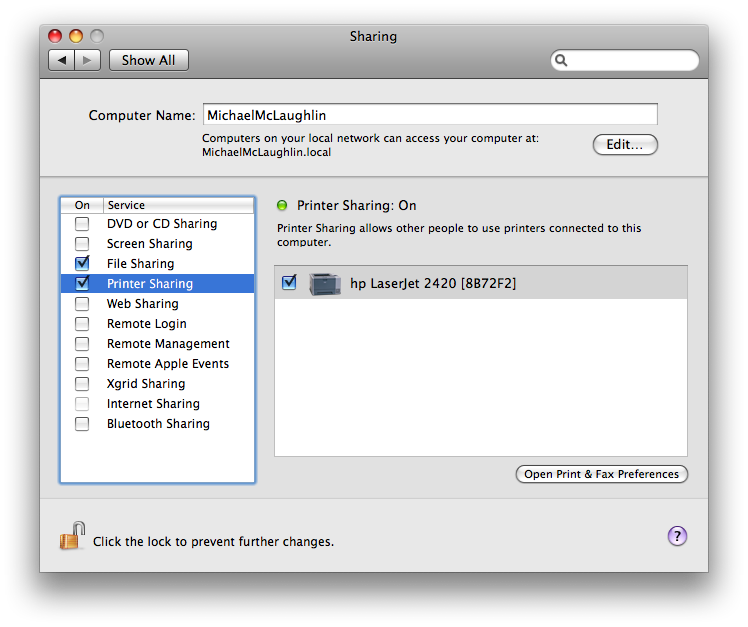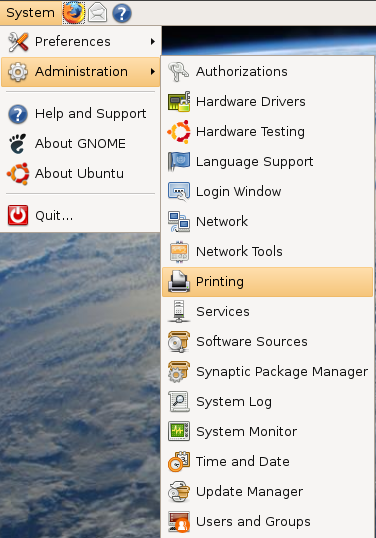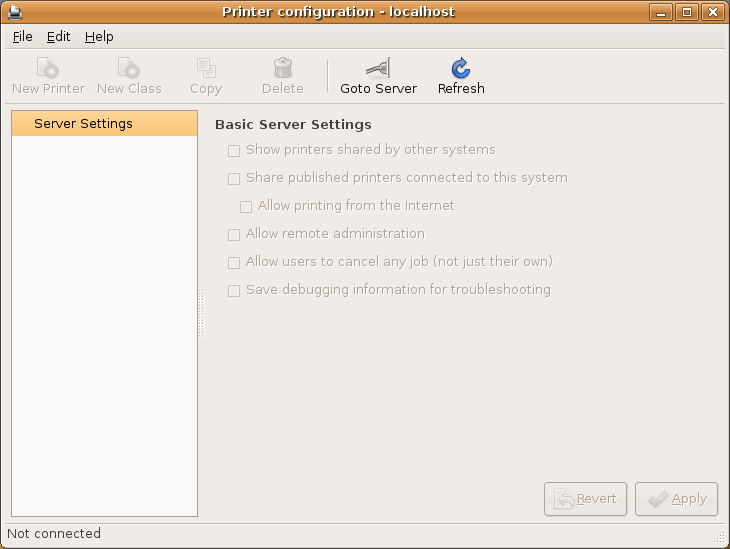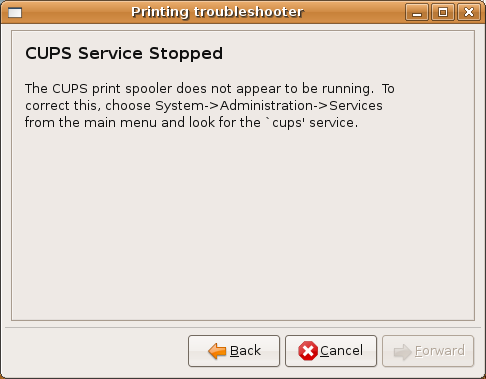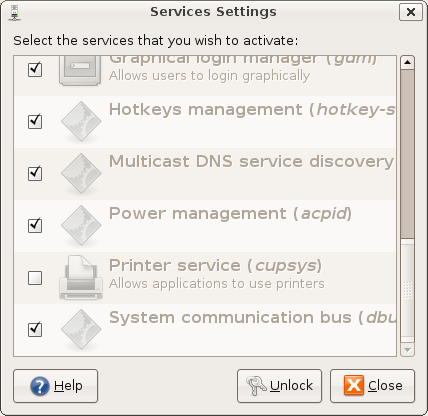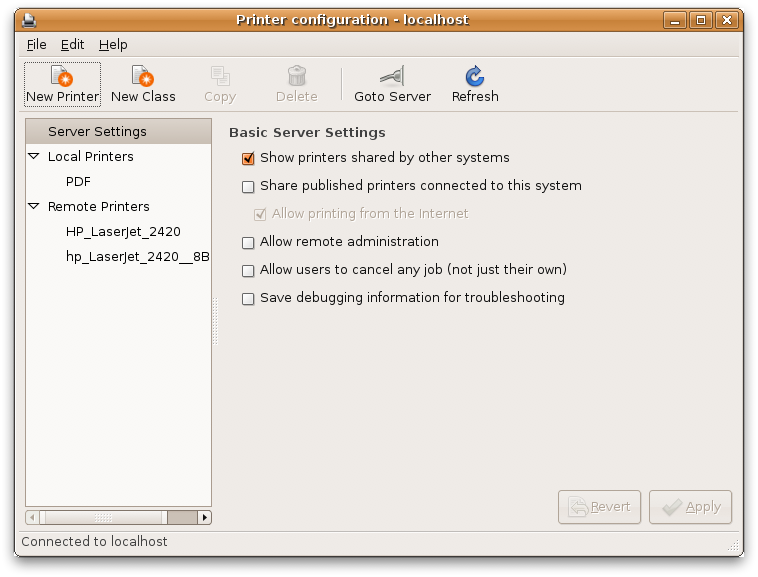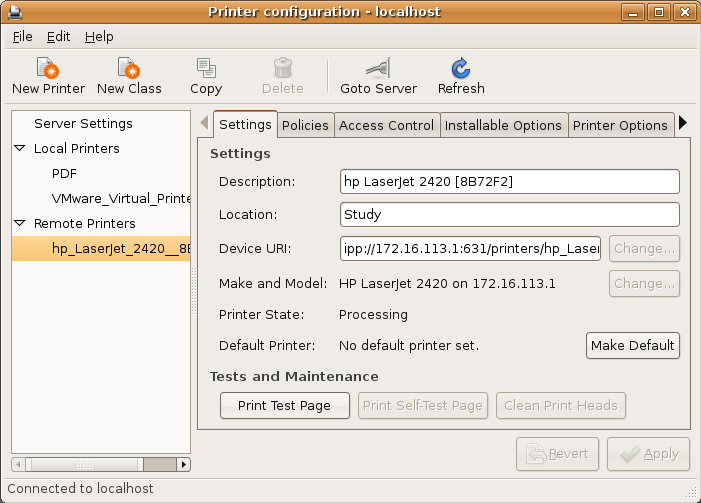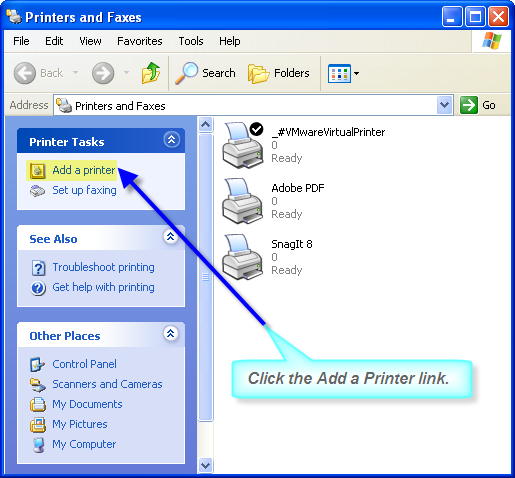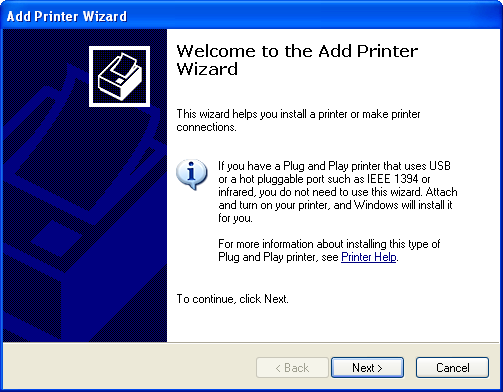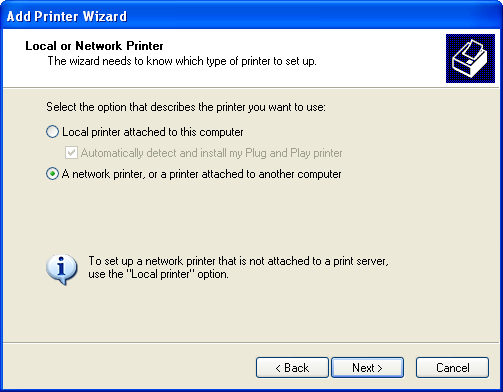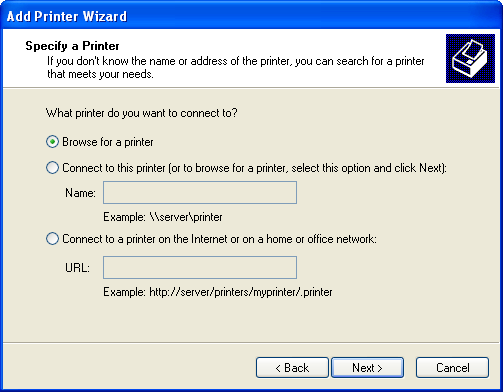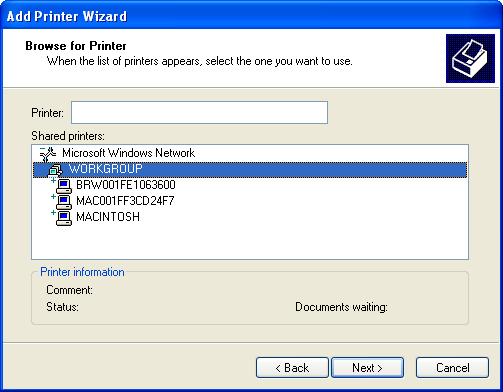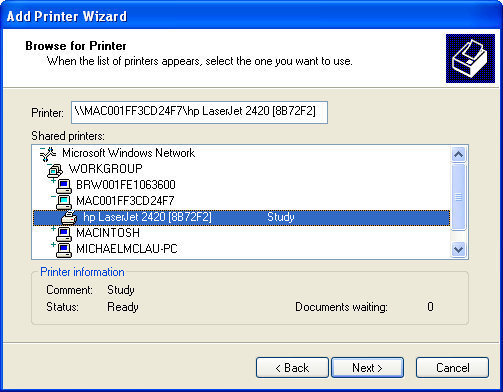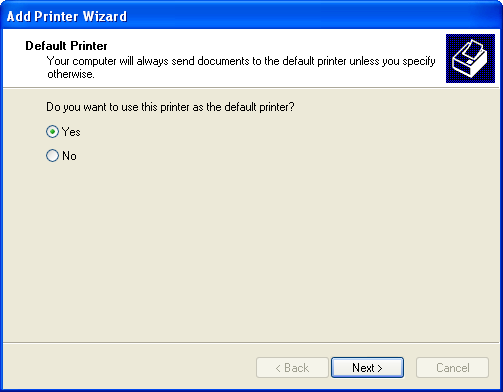Archive for the ‘VMWare’ Category
VMWare stuck on a memory heap
I was doing yet another install of Red Hat AS 4 in VMWare Fusion and ran into a new error. It’s the following: The virtual machine is unable to reserve memory.
The only way I found to fix this involves opening a terminal and killing the process manually. Killing without prejudice (cleanly shutdown the process and dependents) didn’t work. I had to kill it with prejudice (shutdown the process notwithstanding anything), then click the Abort button. The next error message says the peer process is missing and allows you to exit VMWare Fusion. Then, you reboot the Mac OS X.
The steps for find the process and killing it are:
1. Open a Terminal and run the following command:
# ps -ef | grep vmware |
It returns something like this:
0 90 1 0 0:00.00 ?? 0:00.00 /Library/Application Support/VMware Fusion/vmnet-dhcpd -cf /Library/Application Support/VMware Fusion/vmnet8/dhcpd.conf -lf /var/db/vmware/vmnet-dhcpd-vmnet8.leases -pf /var/run/vmnet-dhcpd-vmnet8.pid vmnet8 0 98 1 0 0:00.00 ?? 0:00.00 /Library/Application Support/VMware Fusion/vmnet-dhcpd -cf /Library/Application Support/VMware Fusion/vmnet1/dhcpd.conf -lf /var/db/vmware/vmnet-dhcpd-vmnet1.leases -pf /var/run/vmnet-dhcpd-vmnet1.pid vmnet1 501 160 115 0 1:44.12 ?? 3:15.87 /Applications/VMware Fusion.app/Contents/MacOS/vmware -psn_0_77843 0 322 1 0 0:00.07 ?? 0:00.29 /Library/Application Support/VMware Fusion/vmware-vmx -E en -D ZjTtGrJgANADRAAAAAAAAAAAAAAAAAAAAAAAAAAAAAA= -# product=1;name=VMware Fusion;version=2.0;buildnumber=116369;licensename=VMware Fusion for Mac OS;licenseversion=6.0 build-116369; -@ pipe=/var/folders/fi/fiepDOKbFJeE42RxGcDBgU+++TI/-Tmp-//vmware-mclaughlinm/vmxd9641b5487a98f78;readyEvent=24 /Volumes/Disk2/Red Hat Enterprise Linux 4 Oracle.vmwarevm/Red Hat Enterprise Linux 4 Oracle.vmx 501 397 303 0 0:00.00 ttys000 0:00.00 grep vmware |
2. Kill the VMWare Fusion process by using the following syntax:
# kill -9 322 |
3. Reboot the operating system.
VMWare Fusion tip on upgrading VMWare Tools
You’ll need to right click on the VMWareTools icon and manually extract the file. If you don’t and double click the icon instead, it’ll raise an exception that one already exists. After you manually extract it to your desktop, run the command as follows (replacing your user name of course):
# sudo /home/username/Desktop/vmware-tools-distrib/vmware-install.pl |
I wrote this when it seemed like a good idea. I subsequently discovered that all upgrades aren’t as good as you’d like. Sometimes, a fresh install recommends itself when the virtual machine is Red Hat AS.
VMWare Fusion 2.x causes Ubuntu printing failure
I’d already upgraded my Windows x86 instances to 2.x on my Mac Book Pro but hadn’t got around to Ubuntu until today. The upgrade went fine, and VMWare Tools compilation succeeded and kernel reports were normal. Unfortunately, CUPS (Common Unix Printing Service) fails to start correctly and there doesn’t appear to be any way to fix it without changing the VMWare Fusion libraries. It appears to be a bug introduced by VMWare Tools. I’ve updated my Ubuntu VMWare printer set up steps to note it. If you’ve got a fix for the problem, let me know.
Setting up a printer in VMWare Ubuntu instance
As I mentioned before, working in the virtual machine is a great solution when you need to work in multiple operating systems. Setting up printing is a step that goes with the operating system. It is very easy to configure in Ubuntu running in VMWare on a Mac OS X machine.
I found that the standard printer in the virtual machine wouldn’t work. I tried it in both VMWare 1.x and 2.x but without any luck. It did work ineffectively in VMWare 2.x but it embedded characters in simple documents that shouldn’t be there. Finally, I pursued this course. It has the benefit of working like you’d expect! It lets you print your native Ubuntu documents when you’ve configured the VMWare machine in NAT or bridged networking mode. The only difference is that a bridged network doesn’t require you to share the printer on the Mac OS because it directly accesses it.
The first step using a NAT network requires that you share you printer setup on the Mac OS. You do that by launching System Preferences, then click on Sharing. In Sharing, you enable print sharing by chosing the network printer …
After you’ve enabled sharing on the Mac OS, you can take the following steps in Ubuntu:
1. Click the System menu choice, choose Administration. and Printing, as shown in screen shot:
2. You’ll then see the following screen but not gray scaled. If you don’t, you’ll also see the following form. a gray scaled version indicates that you’ve run VMWare Tools before updating the Ubuntu OS CUPS service:
As mentioned, this means there’s a problem with a disabled service – typically cups (Common Unix Printing Service). You can click the Help, then Troubleshoot to further diagnose the problem. In the first screen click the Forward button to continue. In this screen, click the Not Listed (because it should be an empty list), and then click the Forward button to continue. You most likely will see the following dialog box, which tells you that the cups service is stopped (a general occurrence when you upgrade from VMWare Fusion 1.x to 2.x).
There’s a temptation to follow the instructions, and I yielded to it without a positive outcome. What you’ll find is that the cups (cupsys) service is enabled but if you use the VMWare Fusion menu, you’ll find that it isn’t, as shown:
If you stop here and check in a terminal session, you’ll see that life isn’t rosy after the upgrade. Even if you check it and restart the VM, the printing problem won’t resolve. This appears to be a part of the recompilation of cups by the VMWare Tools. It appears to happen when you opt to compile Ubuntu CUPS while running the VMWare Tools. You’re only prompted to compile these if you’re not on the most current CUPS release by Ubuntu.
You use the following command to check the status of the printer service:
# sudo /etc/init.d/cupsys status |
You will most likely get something like this if you have a problem:
Status of Common Unix Printing System: cupsd is not running but /var/run/cups/cupsd.pid exists. |
This is where it becomes obvious that the VMWare Fusion 2.x upgrade can introduce the problem. It is simple to avoid the problem by ensuring that the Ubuntu OS is patched to the most current CUPs version before running the VMWare Tools. I fixed the problem by reinstalling Ubuntu from scratch, and patching it to the current level. Then, you won’t have a failure of the CUPS process.
When you fix any errors from the upgrade or provided you’re on VMWare Fusion 2.x, you should click the Show printers shared by other systems check box, then click the Refresh button to display any network printers if they don’t refresh automatically.
3. You click on the desired network printer, which displays the following screen. Click the Make Default button after you click the Print Test Page button.
If you caught my post on doing this in a Microsoft Windows environment, isn’t it stuning how easy Ubuntu is compared to the “user-friendly” Windows interface (unless you’re upgrading). If you need the Windows instructions, you can find them here.
Setting up a printer in VMWare Windows instance
Sometimes there are products that run in Windows that don’t have a clone on the Mac, like Microsoft Visio. Working in the virtual machine is the solution but printing is tedious to setup when you’re using a NAT network model. The following instructions show you how to setup a networked printer inside a VMWare instance that uses NAT networking. You can also use it when configuring it in a bridged network configuration. It is more or less the ordinary way for the Windows XP platform.
 I found that the standard printer in the virtual machine wouldn’t work. I tried it in both VMWare 1.x and 2.x but without any luck. It did work ineffectively in VMWare 2.x but it embedded characters in simple documents that shouldn’t be there. Finally, I pursued this course. It has the benefit of working like you’d expect! It lets you print your native Windows documents when you’ve configured the VMWare machine in NAT. The same steps work when you’re using a bridged networking. In a bridged network, you don’t have to share the printer on the Mac OS because it directly accesses it.
I found that the standard printer in the virtual machine wouldn’t work. I tried it in both VMWare 1.x and 2.x but without any luck. It did work ineffectively in VMWare 2.x but it embedded characters in simple documents that shouldn’t be there. Finally, I pursued this course. It has the benefit of working like you’d expect! It lets you print your native Windows documents when you’ve configured the VMWare machine in NAT. The same steps work when you’re using a bridged networking. In a bridged network, you don’t have to share the printer on the Mac OS because it directly accesses it.
The first step requires that you share you printer setup on the Mac OS. You do that by launching System Preferences, then click on Sharing. In Sharing, you enable print sharing by chosing the network printer …
After you’ve enabled sharing on the Mac OS, you can take the following steps in Windows:
1. Click the Start button, then choose Printers and Faxes. You’ll get the following screen where you should click the link to Add a printer. It will launch the Add Print Wizard.
2. You should install the printer drivers if they’re not already installed before launching the Add Print Wizard. You click Next In the first screen.
3. The default radio button is for a locally attached printer. Click the network printer radio button before clicking the Next button.
4. Click the Next button because the default browses for a network connected printer.
5. You shuold see the Microsoft Windows Network, and the default workgroup. Click on the Workgroup to display the possible machine names. If your machine doesn’t show in the list, it’s most likely because your printer wasn’t known in when Windows XP was released. The solution here is to insert the HP disk when you’ve connected it to the virtual machine, and then you simply follow the prompts, as shown in this newer post.
6. Click the appropriate machine that represents the hosting Mac OS (your machine that’s running VMWare). After you click it, you’ll see the target printers that are available through the external Mac OS connectivity and sharing. Click the Next button to proceed.
7. The last activity triggers a warning error. It asks you to confirm that you can trust your Mac. Click the Yes button to proceed (it’s a boring message but click on it if you want to read it).
8. Choose the printer as a default printer by clicking the Yes button. You can choose the No button if you’ve got more than one network printer.
There are problems when you forget to install the hardware first, so make sure you get the hardware installed first.
Static IP steps added to Mac configuration of VMWare
I’ve added the Windows static IP networking steps to the How to configure Mac OS X as an Oracle Client. I’ll try to get back and update the entry for a couple Linux distros (distributions) next week.
If you get the DNS configuration wrong but everything else right, you’ll be able to connect to Oracle. Unfortunately, you won’t be able to make a call out of the VM with the browser.
Oracle OpenWorld 2008 – Day 3
Key Note and News:
There were two big announcements today. The one that I liked the most was what Andy Mendelsohn said, that there will be an Oracle Database 11g Express Edition. You can read the full report in the NY Times. You’ll also find that no date for 11gR2 is available but the beta code must be very close since they’re seeking beta testers.
 The second announcement was the big “X” secret alluded to for Larry Ellison’s key note. Larry basically announced the HP Oracle Exadata Storage Server and HP Oracle Database Machine. There seems to be some cynicism about it, but it sounds interesting.
The second announcement was the big “X” secret alluded to for Larry Ellison’s key note. Larry basically announced the HP Oracle Exadata Storage Server and HP Oracle Database Machine. There seems to be some cynicism about it, but it sounds interesting.
The general idea is to tightly couple hardware and software platforms. Integration of the two components simplifies delivery by reducing complexity, and increases performance for high throughput uses of the Oracle Database. It really makes sense.
For example, if you look at Steve Jobs’ success at Apple (this time around) that’s exactly what he did. He simplified the number of offerings, focused on the quality of hardware and software, and limited the risk of hardware and software incompatibility. Apple seems to clearly dominate the highend market, or at least it made an awesome showing at Oracle OpenWorld 2008 (by my anecdotal eyeballing of machines).
The last point is very close to what Larry’s proposing. By focusing efforts on high load OLTP and data warehouse installations with a one-two punch of integrated hardware and software, Oracle can become more scalable without creating different database engines. More or less, Oracle achieves higher throughput by leveraging hardware with the same product. This means he leverages a great product across new markets (probably IBM’s existing markets), without increasing the number of offerings. He one-ups Steve Jobs because he makes the hardware HP’s problem. Deming (that quality engineering guy) might say Larry risks success by ceding hardware components to a supplier. I don’t think the risk is any greater than the risk Apple has in ceding component manufacturing. The question is: Can HP manage the process as well as Apple now that Carly Fiorina is gone?
Humorous or prophetic, does this shift in platform have a hidden benefit as great as changing from the PowerPC to Intel processor. I don’t see it but this may be a beginning … What I can see immediately, is that configuring a RAC environment may become much easier if everything is prebundled.
Virtualization:
 As you know from my blog posts, I really like virtualization software. So, … it’s probably not a surprise that I spent some time talking virtual machines with my favorite vendor – VMWare.
As you know from my blog posts, I really like virtualization software. So, … it’s probably not a surprise that I spent some time talking virtual machines with my favorite vendor – VMWare.
While hanging there and collecting more information on options, I met Dave Welch. Dave is a consumate maven of virtualization with Oracle and Oracle eBusiness Suite deployments. He had some awesome performance statistics that I’m still digesting. Basically, he debunked a lot of rubish that’s out there about overhead. He works for House of Brick Technologies out of Omaha, Nebraska. Dave actually demonstrated VMWare Stage Manager and VMWare Lab Manager, and told us about the bundling of these two into a suite. They appear a great soltuion to managing and deploying virtual machines. If you’re wondering were the VMWare folks were, don’t worry they were busy somewhere else.
Probably the coolest feature that I saw was how you could clone an Oracle eBusiness Suite for testing and move it to a virtual subnet without cloning. You can do this because the virtual subnet preserves the hostname, IP, et cetera. However, it’s not a cheap date but they’ve a reduced price for next few months. Isn’t that marketing the rule for products at Oracle OpenWorld?
While I like and use VMWare, Sun Microsystems VirtualBox appears very interesting. It also supports the Mac, which makes it a high priority in my testing queue. I’ll let you know what I find. The RedHat entrant in virtualization is Solid ICE. Another item for my list, oh gosh … it keeps on growing.
Business Judgment:
I have to give a business acumen prize to Wells Fargo Bank. Having spent the first 10 years of my career at First Interstate Bank working on the evolution of banking systems, I learned the key rule about technology. Technology has to pay for itself by increasing revenue or decreasing costs.
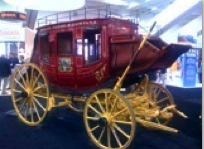 Wells Fargo Bank focused on an API that lets commercial accounts leverage banking services without human intervention. Their focus is to put the technology out there and leave their customers with the implementation costs, customization, and business process engineering. A sharp decision from my perspective but they could have gone one step further. They should have considered placing it in the open source community. The software ultimately has a very short competitive edge, and the return on initial investment would have been higher if they’d capitalized on the creativity of the open source community.
Wells Fargo Bank focused on an API that lets commercial accounts leverage banking services without human intervention. Their focus is to put the technology out there and leave their customers with the implementation costs, customization, and business process engineering. A sharp decision from my perspective but they could have gone one step further. They should have considered placing it in the open source community. The software ultimately has a very short competitive edge, and the return on initial investment would have been higher if they’d capitalized on the creativity of the open source community.
The prize for continuing product evolution through the open source community probably goes to SugarCRM. They place components into their product versions and then into their version of sourceforge (www.sugarforge.org). There, the community can examine, innovate, and improve the software.
Open Source:
 I had a chance to catch up with Chris Jones on PHP and open source scripting. Chris and Alice Holloway provide that wonderful book on PHP known as the Underground PHP and Oracle Manual. It’s great to catch up on Oracle’s commitment to Open source. Remember my favorite news of the day – Oracle Database 11g Express Edition is coming. That’s evidence that Oracle sees the open source community as important and PHP and scripting languages as valuable.
I had a chance to catch up with Chris Jones on PHP and open source scripting. Chris and Alice Holloway provide that wonderful book on PHP known as the Underground PHP and Oracle Manual. It’s great to catch up on Oracle’s commitment to Open source. Remember my favorite news of the day – Oracle Database 11g Express Edition is coming. That’s evidence that Oracle sees the open source community as important and PHP and scripting languages as valuable.
In summary, I’d like to thank TUSC for their courtesy in broadcasting Larry’s key note from their demonstration area. They’re truly a class act! Tomorrow, it’s time to go home. Naturally, I gave the party ticket away to somebody who would enjoy it. The last official day of Oracle OpenWorld 2008 must be left to another to report on … 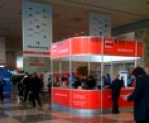
More on Configuring the Mac OS for Oracle 10g Client
I’ve been revising and correcting typos plus adding new content to that Configuring Mac OS for the Oracle 10g Client blog page. It’s more complete now. It also shows you how to connect from one virtual machine to another by using host file resolution.
Also, I’ve decided that the network configuration steps for VMWare NAT belong in a separate blog page. I’ll try to get that out after Oracle OpenWorld 2008. For those you can’t wait, you’ll find the networking files here:
Mac OS X:
/Library/Application Support/VMWare Fusion/vmnet8 |
Linux:
/etc/vmware/vmnet8 |
Windows:
C:\WINDOWS\System32 |
You’ll find three files. The dhcpd.conf file configures DHCP. The nat.conf file configures incoming ports to your virtual machines, which is known as port forwarding. The mac.conf file stores the physical layer MAC address for your machine.
An ugly VMWare Fusion error “/dev/vmnet0” is not running
A VMWare Fusion getcha (new word?) that I ran into tonight. So you don’t waste much time with it, here’s how to fix it. Don’t panic if you encounter an “the network bridge device on /dev/vmnet0 is not running” when trying to start your VMWare instance. It generally means a service didn’t start correctly when you booted your machine.
You can check if its running by running the following command:
# sudo /Library/Application\ Support/VMware\ Fusion/vmnet-cli --status |
Don’t suspend your VM. Let your VM start. Go to a full screen view and shutdown the machine without logging on to a running instance. Shutdown VMWare Fusion. Now, you can reboot your Mac or you can run the following command from the /Library/Application Support/VMWare Fusion directory (options are --start, --stop, or --restart):
# sudo ./boot.sh --restart |
Alternatively, you can run the command like this from any directory.
# sudo /Library/Application\ Support/VMware\ Fusion/boot.sh --restart |
After restarting the service, you shouldn’t have any problem launching VMWare Fusion. I don’t like the fact that you can’t abort the launch of the VM though. That’s got to be a bug!.
Magic configuration steps for Mac OS X and Oracle Client 10g
 This should have been the blog post, but I forgot to check page first. It went out the wrong way. I’ve moved the content to a static blog page.
This should have been the blog post, but I forgot to check page first. It went out the wrong way. I’ve moved the content to a static blog page.
You can find the magic to configure your Mac OS X to natively work with a VM instance running on Linux or Windows. It’s 14 steps long.
If you find anything wrong, please post a comment. Also, if you think there are tags that may help somebody that I’ve excluded let me know.

